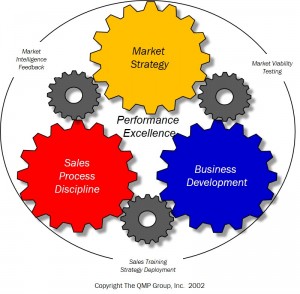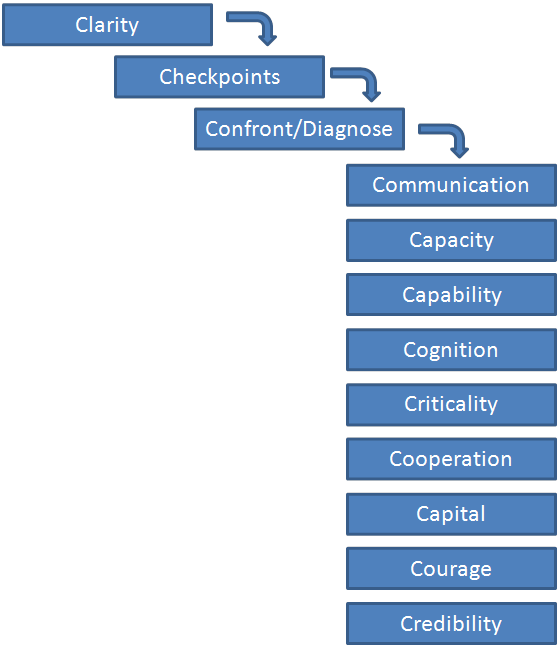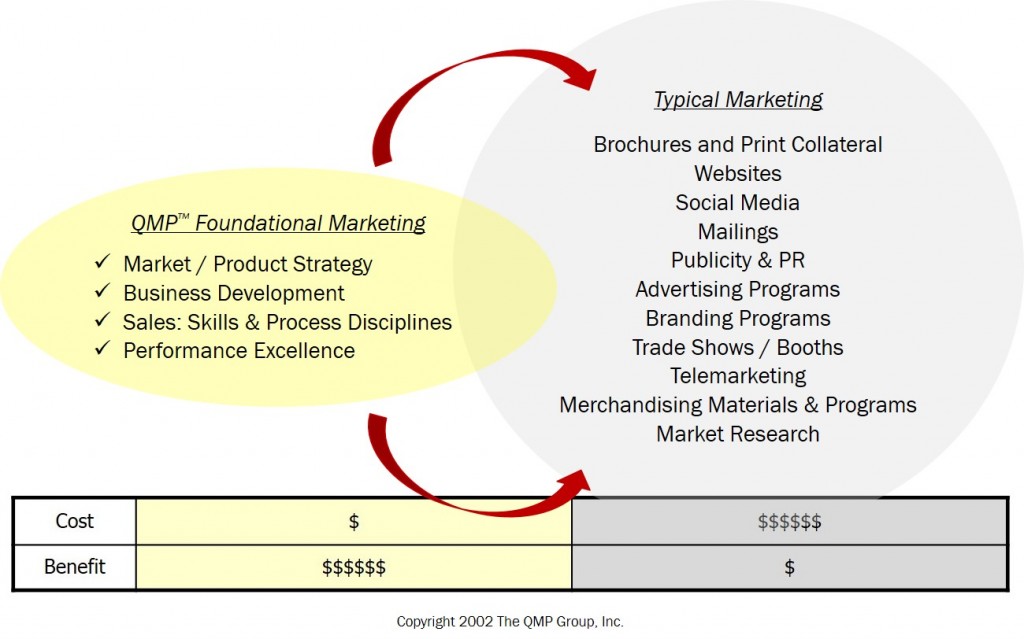The Four Boxes of Product Evolution:
The figure below illustrates the basic four boxes of product development evolution. Along the horizontal axis we have Explicit and Implicit customer needs and wants. Along the vertical axis we have Conscious and Subconscious customer needs and wants. The intersection of these dimensions creates 4 boxes, or quadrants, each defining the level of basic and/or differential value your new product might provide to customers.
The Product Evolution Matrix:
To use the map, simply bulletize the product characteristics you are planning to develop, recording them in each appropriate quadrant. The further up and to the right your newly developed product capabilities fall, the more value they should provide to customers, the higher prices they should be able to command and the higher the innovative brand value they should create.
Think of what box Steve Jobs was working in at Apple – and what he was able to accomplish with Apple’s products and brand.
What to Expect in Each Box:
The Reactive Box:
Engineers and marketers using “Voice of the Customer” techniques to build the product development road map, can simply ask customers what they would like to see in their next generation product. This may be one step better than simply going off into the engineering “lab” and, in a vacuum, conjuring the product changes that the customers “should” like. But, this approach puts the firm squarely in the Reactive Box of our Product Evolution Matrix. A firm working in the lower left hand corner of the map, the Explicit-Conscious sector, is simply reacting to customers’ explicitly-stated needs and missing the opportunity to create unique value.
This is not necessarily a bad thing, unless of course, you stop there and do not venture outside of this box. If your competitors are working in the boxes further to right and up on the map – you lose. Working in the Reactive quadrant, provides little in the way of competitive, defensible advantage – because all competitors can do it.
Many developers elect to start in this box because it’s the easiest and path of least risk. If the redesigned product ultimately fails miserably, the product manager can always say, “Well, we gave them what they asked for. You can’t blame me for wanting to give customers what they explicitly requested.”
However, in order to achieve high customer-value product functionality, strong competitive differentiation and defensibility (all things that permit price premiums), a product manager must travel through, and out of the Reactive Box – upwards and to the right.
The Pro-Active Box:
Thinking in the Pro-Active Box requires a deeper understanding of customers. It requires considering their psychological, emotional and physiological motivations in buying, using and experiencing your product. For example: Consumers would not likely have asked for a microwave oven in the early 1960’s if a cooking stove manufacturer was asking questions in the Reactive Box. They didn’t know what a microwave oven was. Respondents, more likely would have said: “I’d like a clock that does not fail after a few months.” or, “I’d like a self-cleaning oven” or, I’d like a selection of colors other than simply white.”
It would have been unlikely customers would have said “I need a stove that cooks faster because I am pressured by time.” Only by understanding the subconscious, psychological and physiological needs of the primary chef in the house would a faster cook time have been recognized as a critical value needing to be delivered.
In the Pro-Active Box we think about emotions and subconscious physiological factors – not just functions.
The Insight Box:
In the Insight Box a product manager asks the question, “I know what the customer said they want, but what do they really mean?”
Take, for example, a customer observation that a first aid kit is difficult to open. What do they really mean? Does it mean, they have fat thumbs or does it really mean that, the life-saving components in the first aid kit need to very easy to access… fast! Is it a minor inconvenience or a life-saving need.
In the Insight Box we search to understand implicit needs
The Innovation Box:
When a product manager is working in the Innovation Box, he is bringing to bear all of the dimension of need: Conscious, Subconscious, Explicit and Implicit. The Innovation Box produces products that break with tradition, fulfilling needs people didn’t even know they had and providing features they never imagined they would love. The Innovation Box challenges product designers. The Innovation Box creates products that create iconic brands.
Steve Jobs lived in the Innovation Box. Thomas Edison lived in the Innovation Box.
Framing the Innovative Product within an Innovative “Experience”:
But, your job is not complete, even if you have worked our way into the Innovation Box.
Once a product manager has exercised their power of inquiry and thought in these 4 boxes or quadrants, they must then envision all of these boxes working within a greater bubble of the total customer experience. This means that prior emphasis on product features and capabilities must now yield priority to the customer’s total experience. The product must be integrally woven into the total environment your customer will experience in buying, setting up, using, servicing and communicating with your business throughout the life of the product.
This last exercise brings into play almost everything from order entry to repair and replacement parts. The key here is envisioning the perfect experience and creating and aligning all the key parts of the business model, and your organization, around that vision.
Experiential needs then fall into the same four quadrants for consideration. By blending an Innovation Box developed product with an Innovation Box developed experience, you create an true innovation.
Conclusions:
- Never be satisfied with just developing product enhancements out of the Reactive Box. Reactive Box product enhancements rarely achieve price premiums, defensible competitive market positions or market share gains.
- Even a thoroughly mapped out product enhancement plan that incorporates input from all the quadrants can fail on a bad holistic customer experience. The whole customer experience needs to be exercised according to the same 4-quadrant tool.
- All aspects of the business must be aligned to deliver both innovative products and innovative experiences.
>>>>>
Copyright Jerry Vieira, CMC and The QMP Group, Inc 2015 All Rights Reserved
For more information about The QMP Group and it’s methodology for developing market and product strategy, call Jerry Vieira, CMC at 503.318.2696 or email to Jerry@qmpassociates.com.













